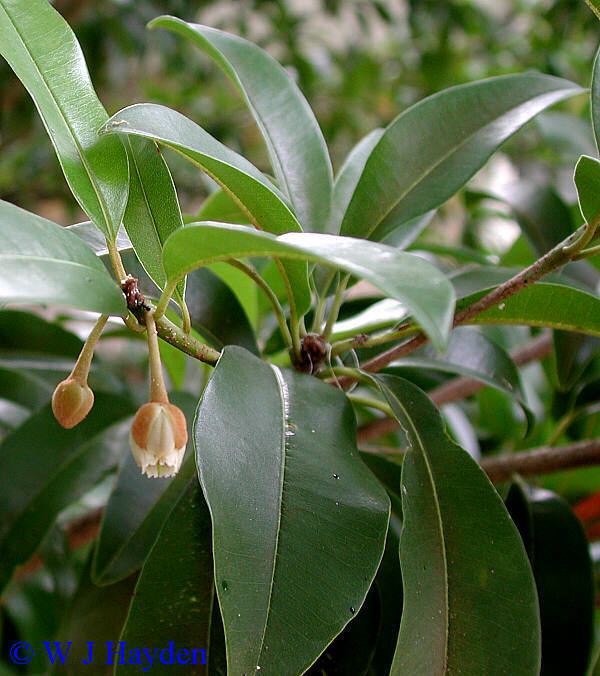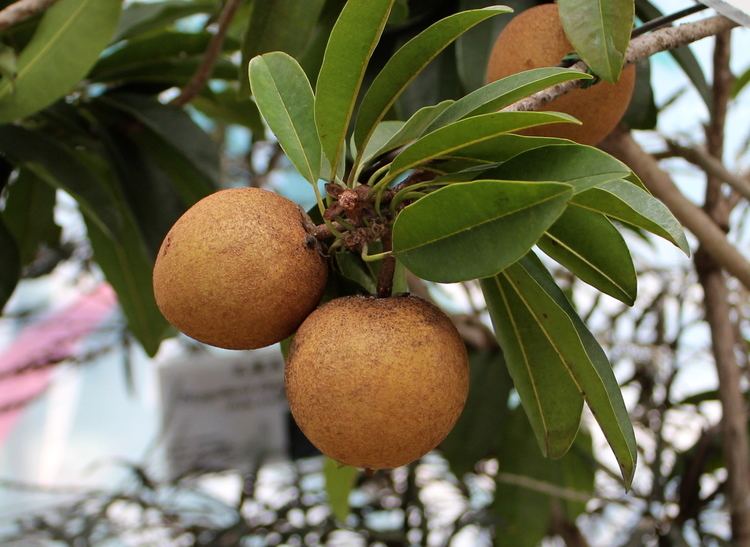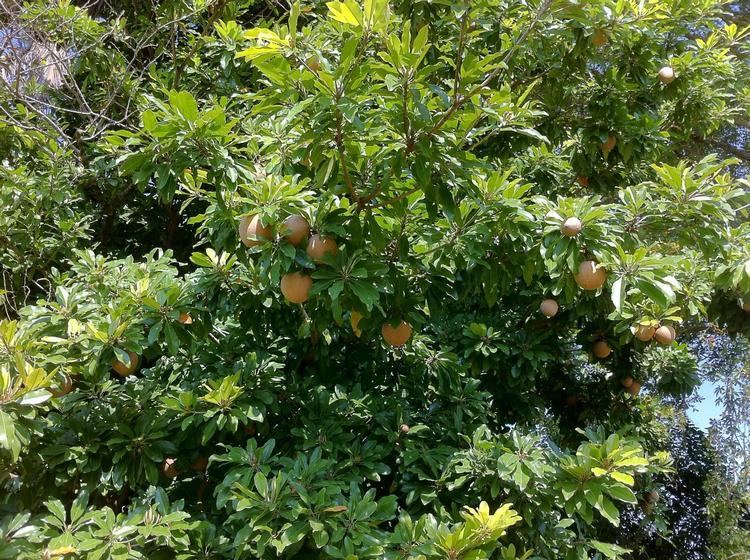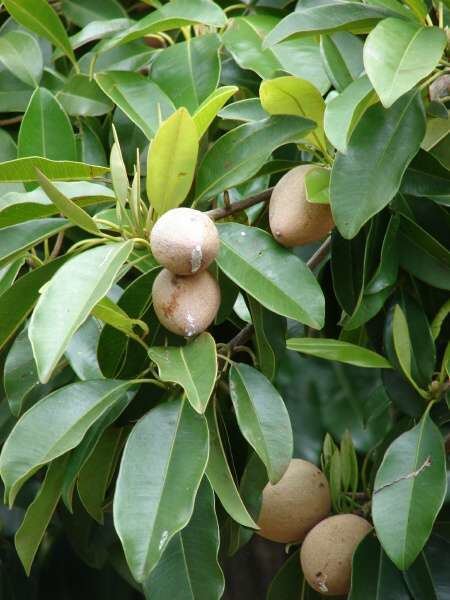Species M. zapota | ||
Similar Jackfruit, Rambutan, Purple mangosteen, Mamey Sapote, Star Apple | ||
Chiku plant manilkara zapota sapodilla
Manilkara zapota, commonly known as the sapodilla (/ˌsæpəˈdɪlə/), is a long-lived, evergreen tree native to southern Mexico, Central America and the Caribbean. An example natural occurrence is in coastal Yucatán in the Petenes mangroves ecoregion, where it is a subdominant plant species. It was introduced to the Philippines during Spanish colonization. It is grown in large quantities in Pakistan, India, Thailand, Malaysia, Cambodia, Indonesia, Bangladesh and Mexico.
Contents
- Chiku plant manilkara zapota sapodilla
- Makok sapodilla manilkara zapota
- Description
- Other names
- Biological studies
- Synonyms
- References

The name "zapota" from the Spanish zapote [θaˈpote] ultimately derives from the Nahuatl word tzapotl.
Makok sapodilla manilkara zapota
Description

Sapodilla can grow to more than 30 m (98 ft) tall with an average trunk diameter of 1.5 m (4.9 ft). The average height of cultivated specimens, however, is usually between 9 and 15 m (30 and 49 ft) with a trunk diameter not exceeding 50 cm (20 in). It is wind-resistant and the bark is rich in a white, gummy latex called chicle. The ornamental leaves are medium green and glossy. They are alternate, elliptic to ovate, 7–15 cm (2.8–5.9 in) long, with an entire margin. The white flowers are inconspicuous and bell-like, with a six-lobed corolla. An unripe fruit has a firm outer skin and when picked, releases white chicle from its stem. A fully ripened fruit has saggy skin and does not release chicle when picked.

The fruit is a large berry, 4–8 cm (1.6–3.1 in) in diameter. Inside, its flesh ranges from a pale yellow to an earthy brown color with a grainy texture akin to that of a well-ripened pear. Each fruit contains one to six seeds. The seeds are hard, glossy, and black, resembling beans, with a hook at one end that can catch in the throat if swallowed.

The fruit has an exceptionally sweet, malty flavor. The un ripe fruit is hard to the touch and contains high amounts of saponin, which has astringent properties similar to tannin, drying out the mouth.

The trees can only survive in warm, typically tropical environments, dying easily if the temperature drops below freezing. From germination, the sapodilla tree will usually take anywhere from five to eight years to bear fruit. The sapodilla trees yield fruit twice a year, though flowering may continue year round.
Other names

Sapodilla is known as mispel in the Virgin Islands and Dutch Caribbean, zapote in Honduras, níspero in Dominican Republic, El Salvador, Costa Rica, Cuba, Guyana, Puerto Rico, Nicaragua, Panama, Colombia and Venezuela, dilly in the Bahamas, naseberry in Jamaica and other parts of the Caribbean, sapoti in Brazil (Portuguese pronunciation: [sɐpuˈtʃi]) and Haiti, chico in the Philippines and chicosapote or chicozapote in Mexico, Hawaii, and Florida.
It is known as chikoo (chiku, "चीकू") in Northern India and Pakistan, ("چیکو" chiku and "ਚੀਕੂ" in Punjab) and sapota in some parts of India ("சப்போட்டா" in Tamil Nadu, "ಸಪೋಟ" in Karnataka, "సపోటా" in Andhra Pradesh, "സപ്പോട്ട " in Kerala), sapathilla or rata-mi in Sri Lanka, sobeda/sofeda (সবেদা or সফেদা) in eastern India and Bangladesh, sabudheli ("ސަބުދެލި") in Maldives, sawo in Indonesia and saos in the province of West Sumatra, hồng xiêm (lit. Siamese persimmon), lồng mứt or xa pô chê in Vietnam, lamoot (ละมุด) in Thailand, Laos and (ល្មុត) in Cambodia.
It is called ciku (pronounced chiku) in standard Malay and sawo nilo in Kelantanese Malay. In Chinese, the name is mistakenly translated by many people roughly as "ginseng fruit" (人參果), though this is also the name used for the pepino, an unrelated fruit; it should instead be "heart fruit" (人心果) because it is shaped like the heart.
Biological studies
Compounds extracted from the leaves showed anti-diabetic, antioxidant and hypocholesterolemic (cholesterol-lowering) effects in rats.
Acetone extracts of the seeds exhibited considerable antibacterial effects against strains of Pseudomonas oleovorans and Vibrio cholerae.
Synonyms
Synonyms of this species include:
